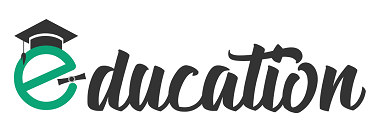As we move toward 2025, the education industry is undergoing a significant transformation driven by advancements in technology. These shifts are reshaping the way teachers deliver education and how students experience learning. One of the most prominent changes is the integration of Artificial Intelligence (AI) into education. AI is becoming a powerful tool for creating personalized learning experiences that cater to individual student needs. Instead of a one-size-fits-all approach, AI-powered platforms such as Knewton and DreamBox use data analytics to assess a student’s progress in real-time and adjust lessons accordingly. This enables a tailored learning experience that can increase student engagement by up to 30%, while improving retention rates by 25%, according to a 2023 McKinsey report. The use of AI in education goes beyond tracking performance; it provides educators with actionable insights to redesign curriculums and optimize classroom management.
Another emerging trend that is set to revolutionize education is the rise of immersive technologies like Virtual Reality (VR) and Augmented Reality (AR). These technologies offer students an opportunity to engage in interactive, hands-on learning in subjects that traditionally rely on theoretical teaching. For example, medical students can practice surgeries in a virtual environment, or engineering students can explore 3D models of complex machinery. According to Statista, the AR/VR market in education is projected to reach $12.6 billion by 2025, reflecting a growing demand for immersive learning environments. The benefits of these technologies are profound: studies from the National Training Laboratory indicate that retention rates for students using VR/AR are as high as 75%, compared to just 20% for traditional classroom methods. This makes VR and AR valuable tools not just for enhancing engagement but for improving long-term comprehension.
In parallel, blockchain technology is gaining traction in the education sector, particularly in the area of credentialing. As educational institutions move toward a more global and digital presence, there is an increasing need for secure, verifiable academic credentials. Blockchain offers a solution by providing a decentralized and tamper-proof way to issue and verify diplomas, certificates, and other credentials. Platforms like Blockcerts and Learning Machine are leading the way, allowing students to share their verified academic achievements with employers and other institutions with ease. A report from the World Economic Forum predicts that by 2025, 35% of universities will be using blockchain to manage credentials. This development not only reduces the administrative burden for schools but also empowers students by giving them greater control over their academic records.
As we emerge from the pandemic era, the demand for hybrid learning models—which blend traditional in-class instruction with online components—has increased. The flexibility of hybrid learning has proven to be particularly effective in reaching students from diverse backgrounds, including those in remote or underserved areas. A 2023 Bill & Melinda Gates Foundation report found that hybrid learning environments led to a 12% increase in student participation, with marginalized groups experiencing a 17% improvement in overall performance. By 2025, hybrid models will become the norm in many institutions, supported by advanced data analytics that allow educators to measure student engagement and the effectiveness of different teaching strategies. This ability to adjust learning in real-time, based on student interaction with both in-person and digital resources, will make education more inclusive and personalized.
The growing adoption of the Internet of Things (IoT) in education is another trend to watch. IoT refers to interconnected devices, such as smart desks, interactive whiteboards, and environmental sensors, which can create a more responsive and adaptive learning environment. In a 2022 Deloitte study, schools that implemented IoT devices reported a 23% improvement in student engagement and a 19% increase in learning outcomes tailored to individual needs. IoT technologies can monitor classroom conditions, optimize lighting and temperature to improve focus, and track student engagement in real-time. For example, sensors can monitor how attentive students are during lessons, allowing teachers to adjust their approach based on immediate feedback. By 2025, IoT will help educators create smart classrooms where the physical environment adapts to the needs of students, fostering a more productive learning experience.
These technology trends are not just incremental improvements; they are fundamentally reshaping the education landscape. As AI enables personalized learning, VR and AR create immersive educational experiences, blockchain secures digital credentials, hybrid learning models offer flexibility, and IoT devices enhance the learning environment, the future of education is becoming more student-centered, inclusive, and effective. Schools and universities that embrace these technologies will lead the way in preparing students for the challenges of a rapidly changing world. While challenges like equitable access to these technologies remain, their potential to transform the education industry is undeniable.
By 2025, these trends will collectively push the boundaries of what is possible in education, making learning more engaging, accessible, and personalized. The real question is not whether these technologies will be adopted, but how quickly educational institutions will be able to integrate them into their teaching methods to unlock the full potential of future learning.
About the Author: Ravinder Tulsiani
Ravinder Tulsiani is a Chief Learning Architect & Strategist. He is a renowned Leadership Expert, Author, and Speaker with 20+ years in the corporate sector. He brings a unique blend of academic insight and practical experience. His approach is data-driven, ensuring that every learning intervention is not only engaging but also delivers measurable ROI. Learn more at RavinderTulsiani.com




